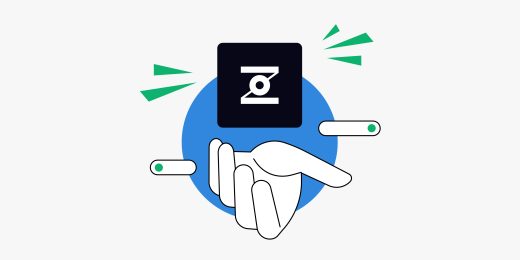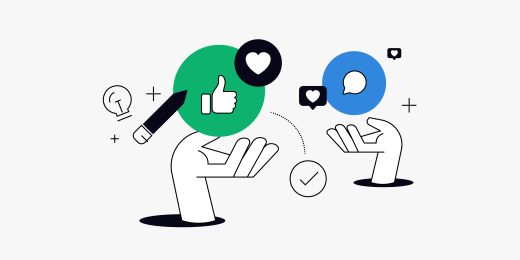Affiliate Tips: The ABCs of SEO

Every picture tells a story and every letter does too. We’re going to help you with your SEO efforts one letter at a time. Let’s get started.
A: Anchor Text: The words shown in a web document that link to a different document. It’s best to make them as seamless and natural sounding as possible. For example:
Something sounds better than something else….
B: Bing: The overlooked search engine. If you’re in a highly competitive keyword category, with the high prices on AdWords to go with it, check out Bing for an affordable and profitable alternative to Google.
C: Crawl: A web crawler is a bot, or internet robot if you will, that crawls the web, generally for the purpose of ranking of websites. This is the first step in how search engines rank sites. The crawler reads your site, then decides its relevance and quality.
D: Directory Submission: One of the key methods to acquiring quality backlinks safely. Directory submission is the process of listing your site to various directories under the correct category or sub category.
E: The 3 “e’s”: Edit; Easy to read and Easy on the eyes. Edit your pages for quality; design so they’re easy to read and while you’re at it, design them so that they’re easy on the eyes. Make your pages easy to read for the user. Especially for mobile.
F: Flash: As in, if you still have this on your site, get rid of it. It’s not only a nuisance for users, search engines have started penalizing for its very presence.
G: Google bot: This is the actual tool that Google uses to “crawl” the web. This is important enough that please allow us to quote from Google directly:
”Googlebot’s crawl process begins with a list of webpage URLs, generated from previous crawl processes and augmented with Sitemap data provided by webmasters. As Googlebot visits each of these websites it detects links (SRC and HREF) on each page and adds them to its list of pages to crawl. New sites, changes to existing sites, and dead links are noted and used to update the Google index.”
H: <h> tags: This is one of the main ways that you tell search engines what your webpage is about and its importance. <h1> is your headline and is most important. From there <h2> is the next important, <h3> after that, etc.
I: Image sitemap: Creating an image sitemap tells search engines about the images on your site. This is also how you tell them that you want these images to be crawled and indexed. This is another way to attract users to your site.
J: Javascript: Very generally, one of the three technologies used to design and create websites. The other two are CSS and HTML. The importance of these is that they do not require plug-ins.
K: Keywords: As vital to the web as oxygen to a living thing. People search for them, search engines rank them and you build your websites around them. As a website site developer, think of keywords as the ‘skeleton’ of your site. Don’t add, subtract or revise any of your web content without a plan for your keywords.
L: Links (to your site; within your site): Links are not only a convenient tool for site visitors by providing them access to related content, but act as a relevance tool for your website. Search engines will rank your site higher the more links that others have to your site. Links that you establish to other content elsewhere on your site is also helpful to users and given some love by the search engines.
M: Metatags: Tell the search engines what your page is about. You can go into more depth here than with the page title. Google might use these as snippets for your pages. Your tags need to include the pages’ keywords and be written succinctly.
N: Navigation: Your site navigation is how visitors get around your site. I’m confident that when you created your site that it made sense. It’s always a good idea to review this to make sure that all of your links work; that people can get from page to page with ease, and there’s an intuitive path around your site. And don’t forget to make sure the path to purchase is always easy to find no matter where you are on the site.
O: Organization: AKA “The Big ‘O’”. Becoming and remaining a successful Affiliate Marketer is about having a number of personal qualities in abundance. If you are not organized with your time; if your web design is not organized; or your daily work doesn’t have an organized structure, your efforts will fall short. Make notes, make schedules, whatever works, but stay organized.
P: Persistence: Another big personal trait that need in abundance to be a great Affiliate Marketer. You should flat out want it more than anyone else.
Q: Quixotic: We just like the word, so here it is. At its most negative, quixotic means unrealistic and impractical. But it can also mean imaginary, fanciful, visionary and fantastic. We have yet to meet a leader who does not have pieces of both.
R: Robots.txt: There are probably parts of your site that you don’t want accessed by search engine crawlers. This is the code you use to make keep them away. If you choose to use robots.txt, we recommend doing a little research first. It’s important to differentiate between this file and a nonindex file. Learn which one is best for your needs.
S: Sitemap: This is the file you create to tell search engines the organization of your web content. Web crawlers will crawl your site based on your sitemap. It can also include metadata which tells the search engine the last time the page was updated, how often they’re updated and a page’s importance compared to other pages on the site.
Image sitemaps work the same way, telling the search engines about the images on your site and how you want these images to be crawled and indexed. This is another way to attract users to your site.
T: Title tags: Because your title tags are shown (as long as they are not too long) in the search results, choosing good titles is imperative. It helps consumers and search engines like them too. Title tags are as important as header tags. This combination will help improve your rankings.
U: User. Focus on the user: Yes, we have focused a great deal of attention on keywords, titles and search engines. But, don’t forget the user: your customer. We’ve all seen sites that are designed for search engines. They’re generally not an enjoyable experience. You can do both SEO and provide great user experience. Make sure that’s a priority.
V: Video: There are motion pictures that have been shot with a cell phone. Not having equipment is no longer an excuse for not having video on your site. If you need help either writing or in the production, contact a local university and see if you can post for some students to help you. Even your local library may have a physical information board or a digital one; either way help is out there, you just have to go find it.
And don’t forget….stock video. Often you can find what you want on shutterstock or other video source.
W: Webmaster tools: http://www.bing.com/toolbox/webmaster/
https://www.google.com/webmasters/#?modal_active=none
X: XML sitemap: Do you have a WordPress site? Use this: https://wordpress.org/plugins/google-sitemap-generator/ link to generate a sitemap that won’t slow down performance and will succeed in allowing the search engines to crawl your sites.
Y: Yahoo: The rumor mill is camped out at their headquarters. Verizon will buy them, they’re shutting down, they want to stream NFL games, you name it and it’s been attributed to Yahoo. Quite frankly we include them here because it’s fun to speculate what might happen to them.
Z: https://www.clickz.com/category/search/seo# – A library of digital marketing articles and resources. Use for guidance, inspiration or just plain ‘ol learning.
Material Disclosure: This content is for informational purposes only. ZeroParallel.com does not represent or endorse the accuracy or reliability of any of the information, content or advertisements contained on, distributed through, or linked, downloaded or accessed from any of the services contained on this website, nor the quality of any products, information or other materials displayed, purchased, or obtained by you as a result of reading and using this site. Zero Parallel may temporarily remove or delete what appears to be potentially unlawful content or content otherwise prohibited under this policy. Please consult your legal counsel before relying or acting on any information provided on this or any third party website.
Think of these as snapshots…put them together and it becomes the album that is your website.



